
The rectangle is resized by a factor of 2 with central point (0, 0), then resized again by a factor of 0.5 with central point (2, 0). Which one of the following shows the correct image?
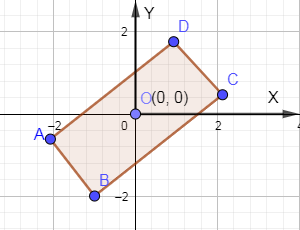
(a)
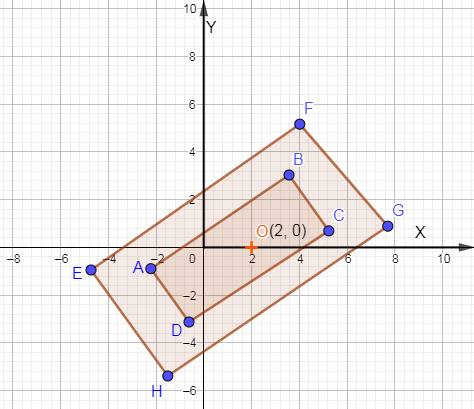
(b)
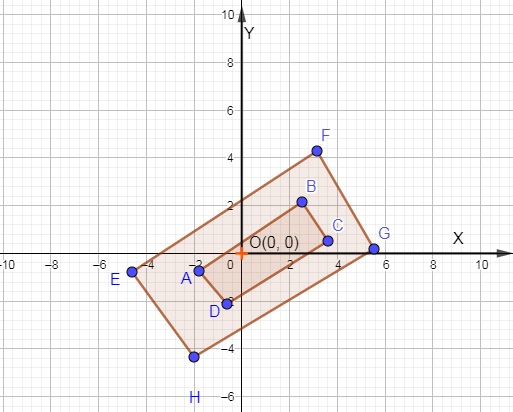
(c)
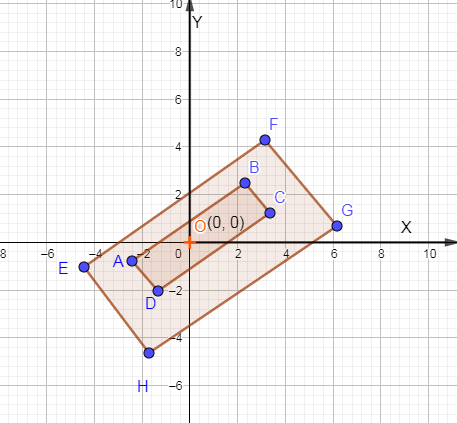
(d)
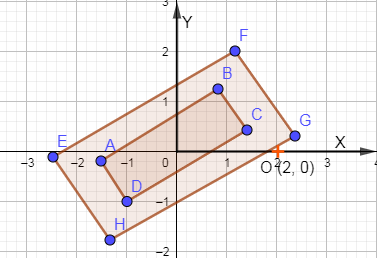





Answer
564.3k+ views
Hint: Here, first we have to examine the figures carefully then write down the description for each figure regarding the factor and centre before and after resizing which will help us to get a clear picture of our answer.
Complete step-by-step answer:
Here, in figure (a):
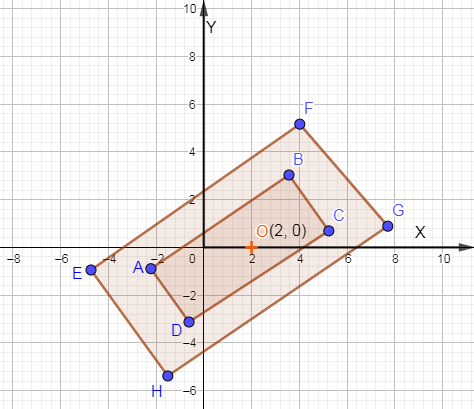
If you carefully look at the above figure, you will see that EFGH is a resizing of the original figure by a factor of 2 with central point $\left( 0,0 \right)$ and then ABCD is a resizing by a factor of 0.5 with central point $\left( 2,0 \right)$.
In figure (b),

ABCD shows a resizing of the original by a factor of 0.5 with central point $\left( 2,0 \right)$ followed by the resizing of ABCD which gives EFGH by a factor of 2 with central point $\left( 0,0 \right)$.
So now, in (c),
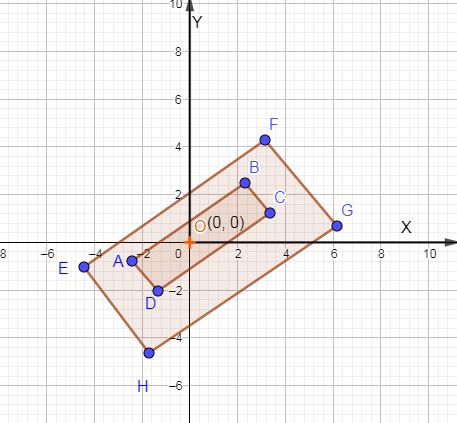
In the above figure, we can see that EFGH is resizing by a factor of 2 with central point $\left( 2,0 \right)$ then resized by a factor of 0.5 with central point $\left( 0,0 \right)$.
Similarly, in figure (d)
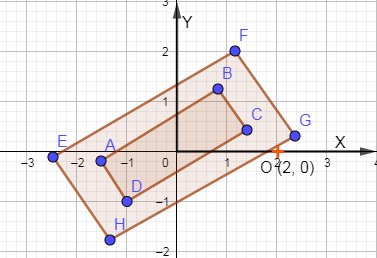
In the above figure, you can see that ABCD is a resized of the original by a factor of 0.5 with central point $\left( 2,0 \right)$ and then EFGH is the resized by a factor of 2 with central point $\left( 2,0 \right)$.
Therefore, we can say that figure (a) is the rectangle that is resized by a factor of 2 with central point $\left( 0,0 \right)$, then again resized by a factor of 0.5 with central point $\left( 2,0 \right)$.
So, the correct answer is “Option (a)”.
Note: Here, resizing means the shape getting bigger or smaller. Resizing not only requires a scale or a factor but also a centre point of origin. Here, you can consider resizing as a torch shining from the centre point to the rectangle and the resize depending on the scale.
The important point to be noted here is that the cross $\left( + \right)$ sign in the figures, represents the central point of the final resized figure.
Complete step-by-step answer:
Here, in figure (a):

If you carefully look at the above figure, you will see that EFGH is a resizing of the original figure by a factor of 2 with central point $\left( 0,0 \right)$ and then ABCD is a resizing by a factor of 0.5 with central point $\left( 2,0 \right)$.
In figure (b),

ABCD shows a resizing of the original by a factor of 0.5 with central point $\left( 2,0 \right)$ followed by the resizing of ABCD which gives EFGH by a factor of 2 with central point $\left( 0,0 \right)$.
So now, in (c),

In the above figure, we can see that EFGH is resizing by a factor of 2 with central point $\left( 2,0 \right)$ then resized by a factor of 0.5 with central point $\left( 0,0 \right)$.
Similarly, in figure (d)

In the above figure, you can see that ABCD is a resized of the original by a factor of 0.5 with central point $\left( 2,0 \right)$ and then EFGH is the resized by a factor of 2 with central point $\left( 2,0 \right)$.
Therefore, we can say that figure (a) is the rectangle that is resized by a factor of 2 with central point $\left( 0,0 \right)$, then again resized by a factor of 0.5 with central point $\left( 2,0 \right)$.
So, the correct answer is “Option (a)”.
Note: Here, resizing means the shape getting bigger or smaller. Resizing not only requires a scale or a factor but also a centre point of origin. Here, you can consider resizing as a torch shining from the centre point to the rectangle and the resize depending on the scale.
The important point to be noted here is that the cross $\left( + \right)$ sign in the figures, represents the central point of the final resized figure.
Recently Updated Pages
Why is there a time difference of about 5 hours between class 10 social science CBSE

In cricket, what is a "pink ball" primarily used for?

In cricket, what is the "new ball" phase?

In cricket, what is a "death over"?

What is the "Powerplay" in T20 cricket?

In cricket, what is a "super over"?

Trending doubts
What is meant by exothermic and endothermic reactions class 11 chemistry CBSE

Which animal has three hearts class 11 biology CBSE

10 examples of friction in our daily life

One Metric ton is equal to kg A 10000 B 1000 C 100 class 11 physics CBSE

1 Quintal is equal to a 110 kg b 10 kg c 100kg d 1000 class 11 physics CBSE

Difference Between Prokaryotic Cells and Eukaryotic Cells




